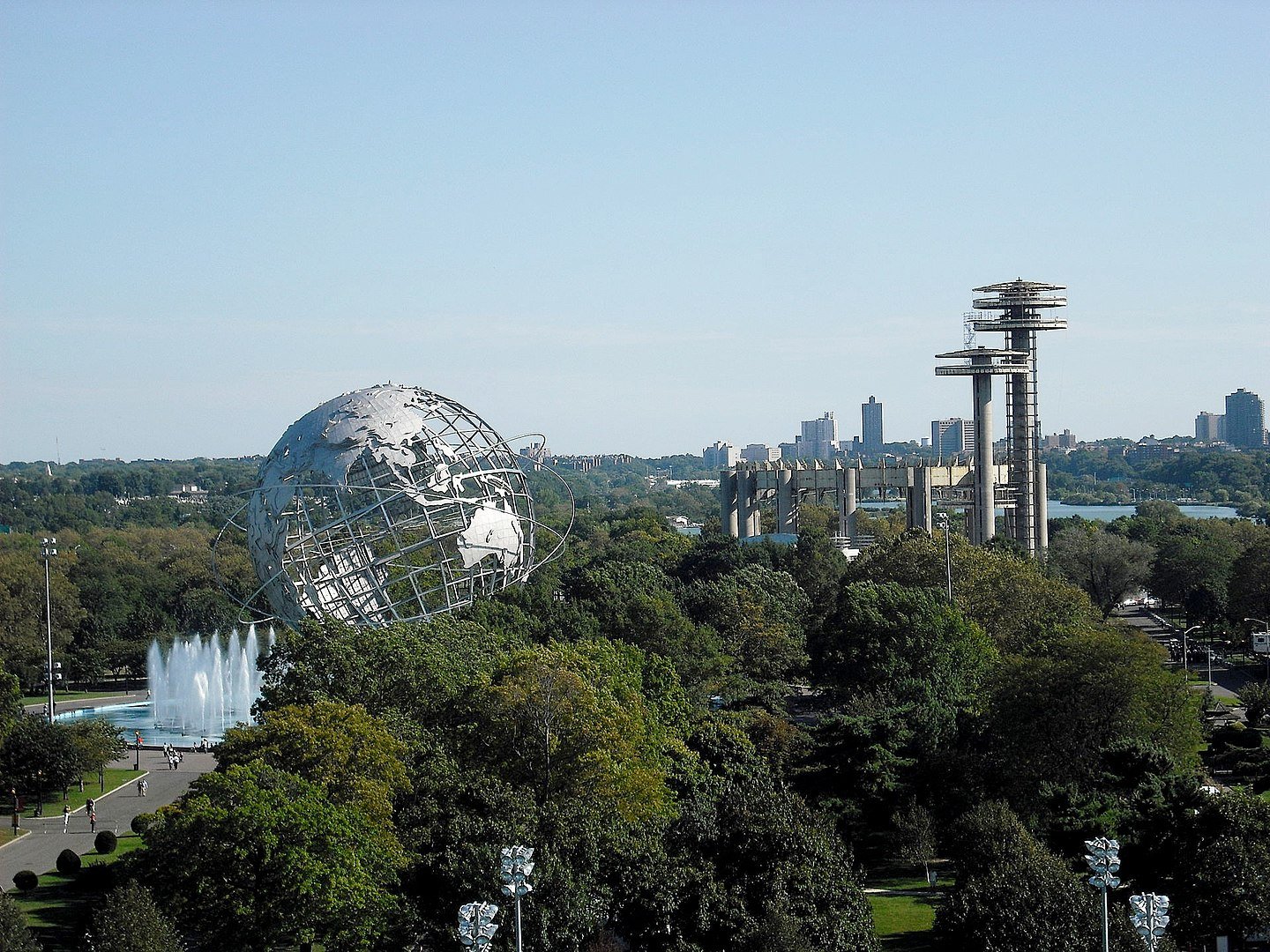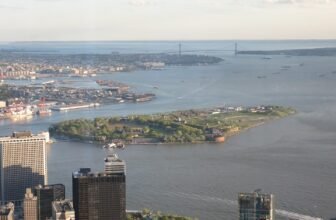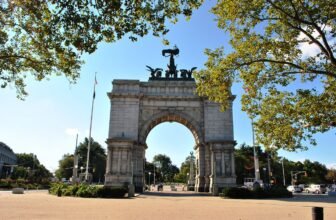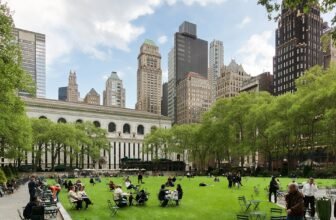
A Day at Flushing Meadows-Corona Park
Exploring New York’s Cultural Playground
It was a breezy Saturday morning in early September when I first set foot in Flushing Meadows-Corona Park, Queens’ crown jewel. I’d visited New York City numerous times, but like many travelers, I had been magnetically drawn to the iconic heart of Manhattan , Central Park. This time, however, I set out with a mission to explore the oft-overlooked green expanse known to locals as simply “Flushing Meadows.” What I discovered that day wasn’t just a park, but a vibrant fusion of history, culture, sports, and diversity, teeming with life and surprises at every turn.
Is Flushing Meadows Worth Visiting?
Absolutely , Flushing Meadows-Corona Park is not only worth visiting, it’s essential for those who want to understand the soul of Queens, and by extension, New York itself.
The park is New York City’s fourth-largest, sprawling over 897 acres, which makes it larger than either Prospect Park or Battery Park. But sheer size isn’t what makes it special. What sets Flushing Meadows apart is its unique blend of global heritage, recreational opportunity, and community energy.
As I strolled past families picnicking under shady trees, teenagers playing soccer, elderly couples dancing to Latin music near the Unisphere, and children giggling in the playgrounds, it was clear , this wasn’t just a park; it was a mosaic of the world.
What Is Flushing Meadows Famous For?
Most people know Flushing Meadows for being the home of the US Open, one of the world’s most prestigious tennis tournaments. Every late August to early September, Arthur Ashe Stadium and the USTA Billie Jean King National Tennis Center light up with the energy of thousands of fans watching the sport’s greatest legends battle for the Grand Slam title.
But there’s so much more to the park than tennis.
It was the site of two World’s Fairs , the 1939-40 and 1964-65 editions , events that celebrated innovation, unity, and the promise of a better tomorrow. The Unisphere, a 140-foot-tall stainless steel globe built for the 1964 Fair, remains the park’s most iconic landmark. It’s a symbol of global interconnectedness, and standing in front of it, with its rings representing the orbits of early satellites, is a moment that makes you ponder humanity’s progress.
Nearby lies the New York Hall of Science, a legacy of the 1964 Fair that now serves as an interactive science museum. With hands-on exhibits, it’s a favorite among school trips and curious minds. There’s also the Queens Museum, home to the Panorama of the City of New York, a meticulous scale model of all five boroughs that’s breathtaking in its detail.
The park also contains Citi Field, home to the New York Mets, adding a layer of baseball history and passion to the park’s identity. And let’s not forget Queens Botanical Garden, Meadow Lake (the city’s largest lake), the Queens Zoo, and miles of trails and fields.
Flushing Meadows vs. Central Park
Comparing Flushing Meadows-Corona Park to Central Park is like comparing an intricate, vibrant mural to a classical oil painting , both masterpieces, yet entirely different in tone, scope, and experience.
Central Park is romantic, manicured, and refined. It was designed in the mid-1800s by Frederick Law Olmsted and Calvert Vaux as a pastoral escape for Manhattan’s elite and everyday citizens alike. You’ll find Shakespearean sculptures, horse-drawn carriages, rowboats, and street performers. It’s the subject of films, songs, and postcards , an urban Eden.
Flushing Meadows, by contrast, is raw, real, and cosmopolitan. It doesn’t try to be polished; instead, it reflects the true diversity of Queens, the most ethnically diverse urban area on Earth. You hear dozens of languages walking its paths , Spanish, Mandarin, Urdu, Bengali, Korean , and each corner of the park has its own pulse. While Central Park feels like an escape from the city, Flushing Meadows feels like an extension of it, beating with the same multicultural rhythm that defines New York.
Why Is Flushing Meadow Called “Flushing”?
The name “Flushing” might evoke thoughts of toilets to outsiders, but its origin is far more elegant.
The neighborhood was originally settled by the Dutch in the 17th century and named Vlissingen, after a port town in the Netherlands. The British later anglicized the name to Flushing, and it became a hub for religious freedom and trade. Over centuries, the name endured, lending itself to the creek (now Flushing Creek), the bay (Flushing Bay), and ultimately, the park itself.
So no, it has nothing to do with plumbing , it’s a nod to European heritage and early New York colonial history.
Which Tennis Player Is Flushing Meadows Named After?
A common misconception is that “Flushing Meadows” is named after a tennis player. In fact, it is not named after any athlete. However, the stadiums within the park are named after two tennis legends:
-
Arthur Ashe Stadium, named after the groundbreaking African-American tennis champion who won three Grand Slam titles and used his platform to fight for civil rights and HIV/AIDS awareness.
-
The Billie Jean King National Tennis Center, named after the iconic player who campaigned for gender equality in sports and famously defeated Bobby Riggs in the “Battle of the Sexes” match in 1973.
These names aren’t just honorary , they represent values. Ashe and King both transcended tennis to become cultural changemakers, making their names on the grounds of Flushing Meadows deeply meaningful.
What Happens at Flushing Meadows Throughout the Year?
There’s no “off-season” at Flushing Meadows. The park buzzes with activity year-round, making it more than just a tennis venue.
In the spring, cherry blossoms bloom in the botanical garden and around the lakes. In summer, the fields are packed with cricket matches, soccer games, and barbecues. You’ll often find festivals happening , from the Hong Kong Dragon Boat Festival at Meadow Lake, to cultural parades and open-air concerts.
During the US Open, the atmosphere becomes electric. Thousands of fans flood the grounds, food stands offer global cuisine, and even non-tennis lovers find themselves swept up in the excitement. You can often catch a match on a giant screen outside the stadium while enjoying a craft beer and shrimp tacos.
In the fall, joggers and cyclists enjoy the crisp air and changing leaves. And even in winter, the park doesn’t sleep. The Queens Museum stays open, and the trails are quiet but alive with determined runners and bundled-up walkers.
In essence, Flushing Meadows is a park for all seasons, all cultures, all people.
Why Is It Called Corona Park?
The name “Corona” comes from the adjacent neighborhood of Corona, Queens, which borders the western edge of the park. The neighborhood itself was named in the 19th century , one theory suggests it was meant to symbolize a “crown,” from the Latin word corona, fitting for a place seen as the jewel of Queens.
It was only in the latter half of the 20th century that the two names , Flushing Meadows and Corona Park , were hyphenated together to form Flushing Meadows-Corona Park, reflecting the geographical and cultural overlap between these two dynamic areas.
During the COVID-19 pandemic, the name “Corona” took on tragic new resonance as the neighborhood became one of the hardest-hit in the early days of the crisis. But the community’s resilience shone through, just as it always has. The park remained a place of healing, hope, and gathering, reinforcing its role as a community anchor.
Flushing Meadows-Corona Park , NYC’s Global Heartbeat
Is Flushing Meadows worth visiting?
Without a doubt. If you want to experience New York beyond Manhattan, to feel the heartbeat of the city’s diverse communities, and to walk through decades of cultural history , Flushing Meadows is your destination.
It’s a park built on a former ash dump (immortalized in The Great Gatsby as the “valley of ashes”) that transformed into a beacon of global unity through the World’s Fairs. It hosted queens and astronauts, tennis champions and jazz legends. Today, it hosts everyone , from toddlers in strollers to 90-year-olds doing tai chi at sunrise.
This is a place where worlds collide , in the best way possible.
So next time you’re in New York, take the 7 train out to Queens. Step off at Mets-Willets Point. Walk under the shadow of the Unisphere. Hear the laughter, smell the grilled meats, feel the rhythm of live music and casual soccer matches, and know: you’ve found one of New York’s most authentic treasures.
Travel Tips:
-
📍 Location: Flushing Meadows-Corona Park, Queens, NY
-
🚇 How to Get There: Take the 7 train to Mets-Willets Point
-
🎟️ Entry: Free to enter the park; museums and events may charge admission
-
🕒 Best Time to Visit: Late spring through early fall for festivals and weather





